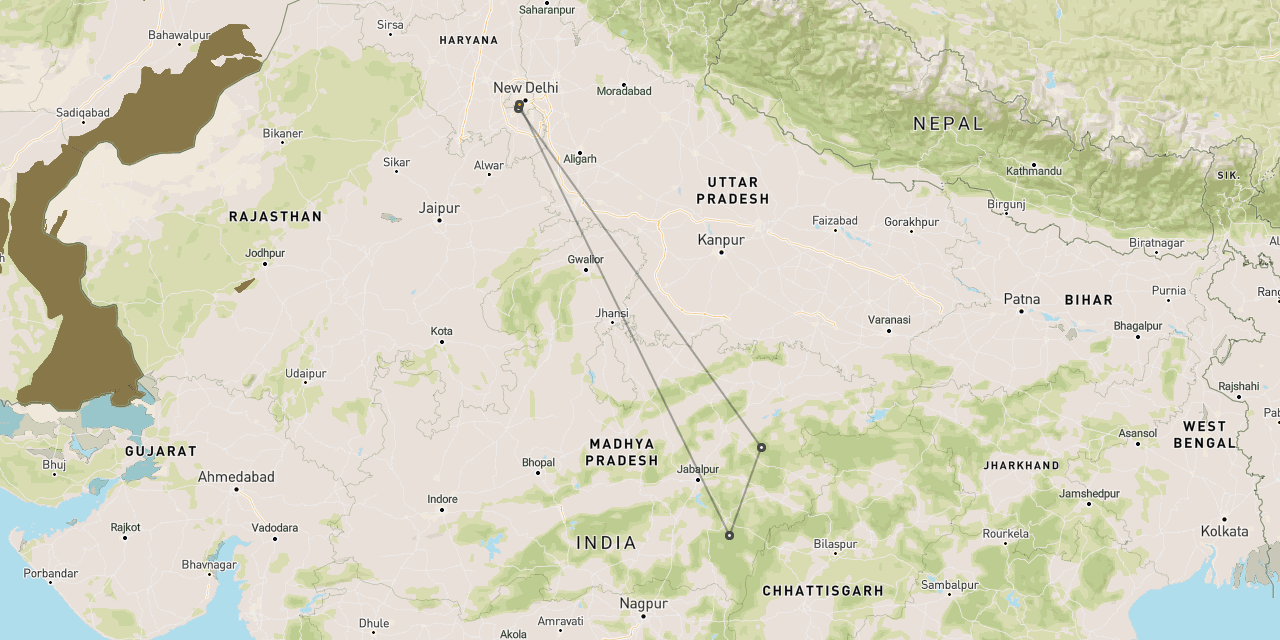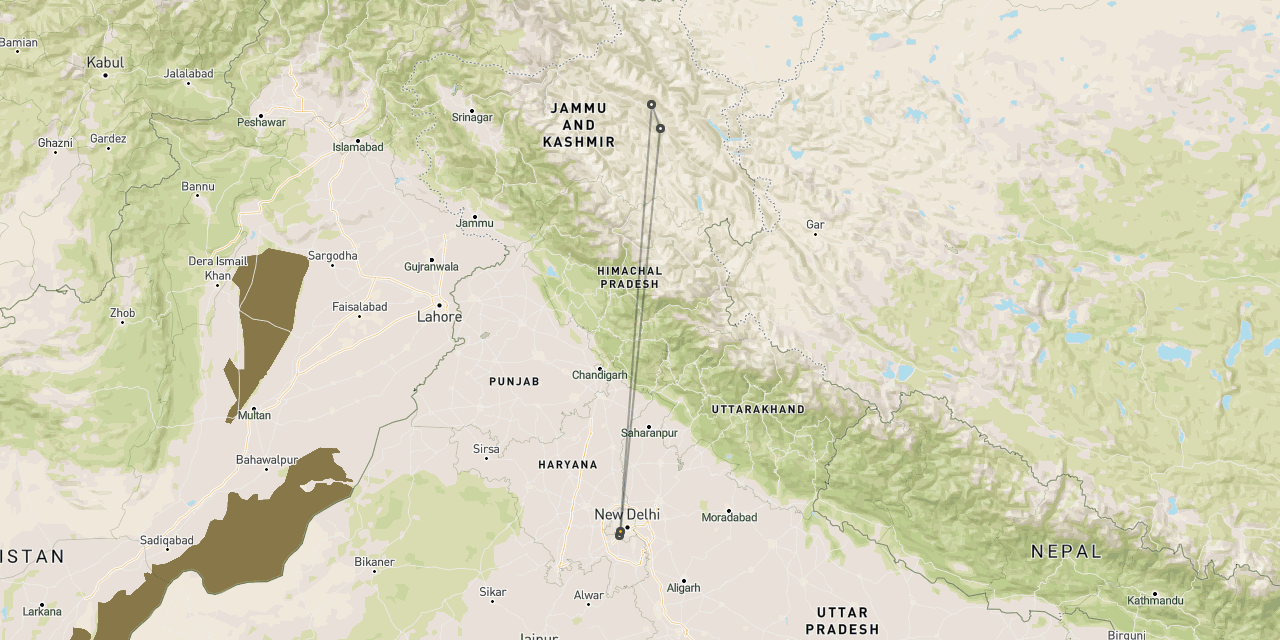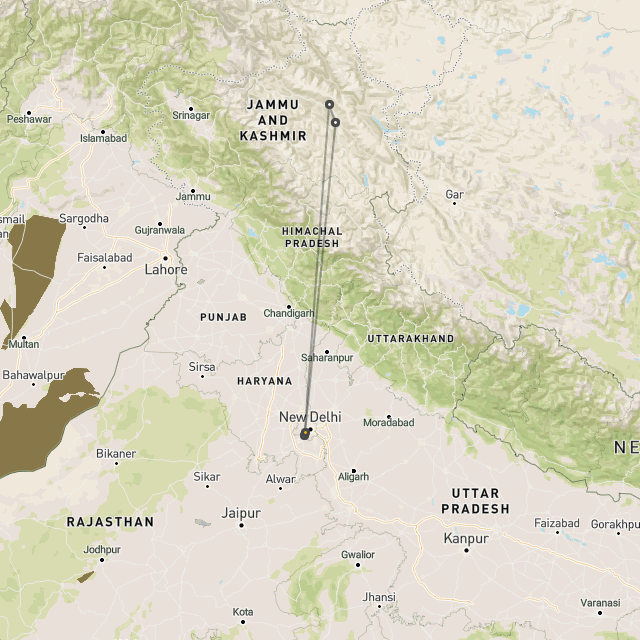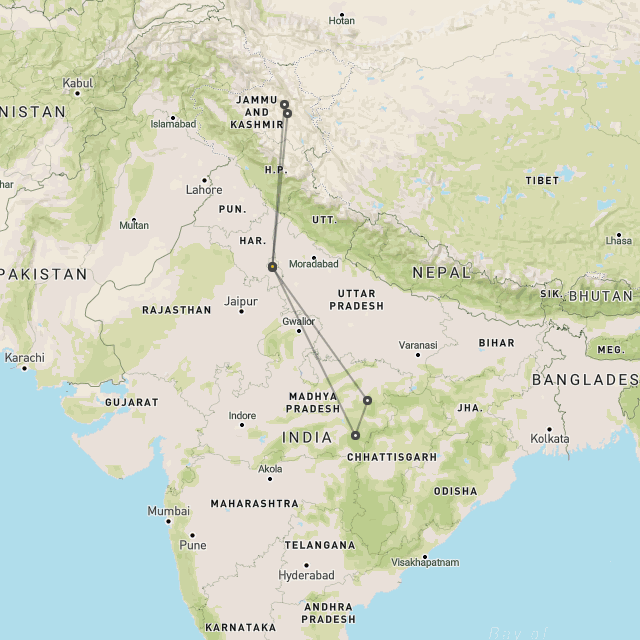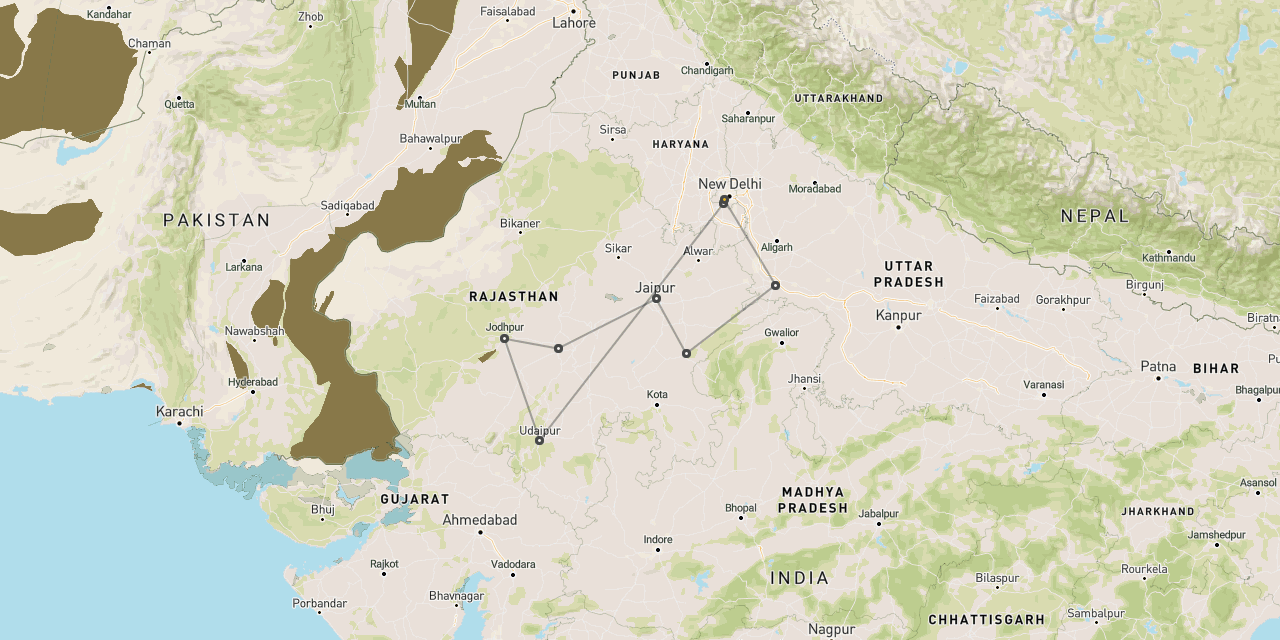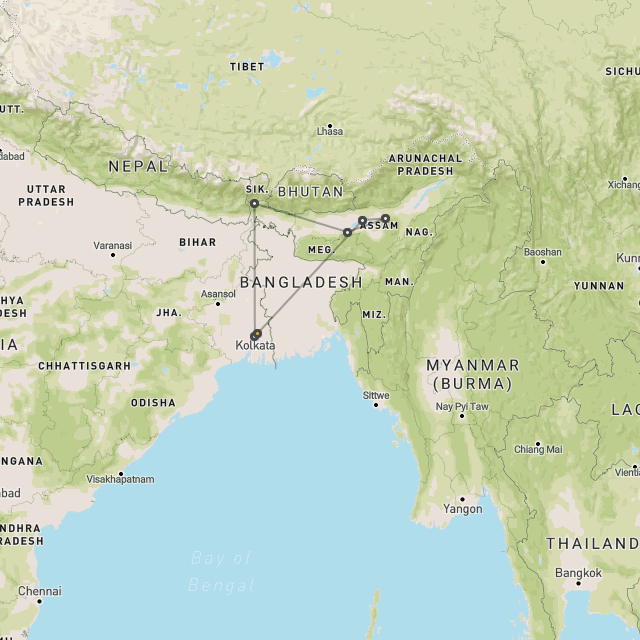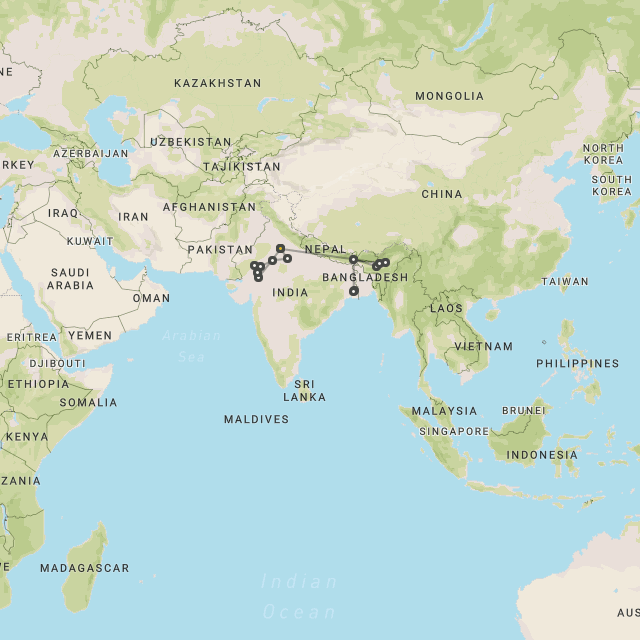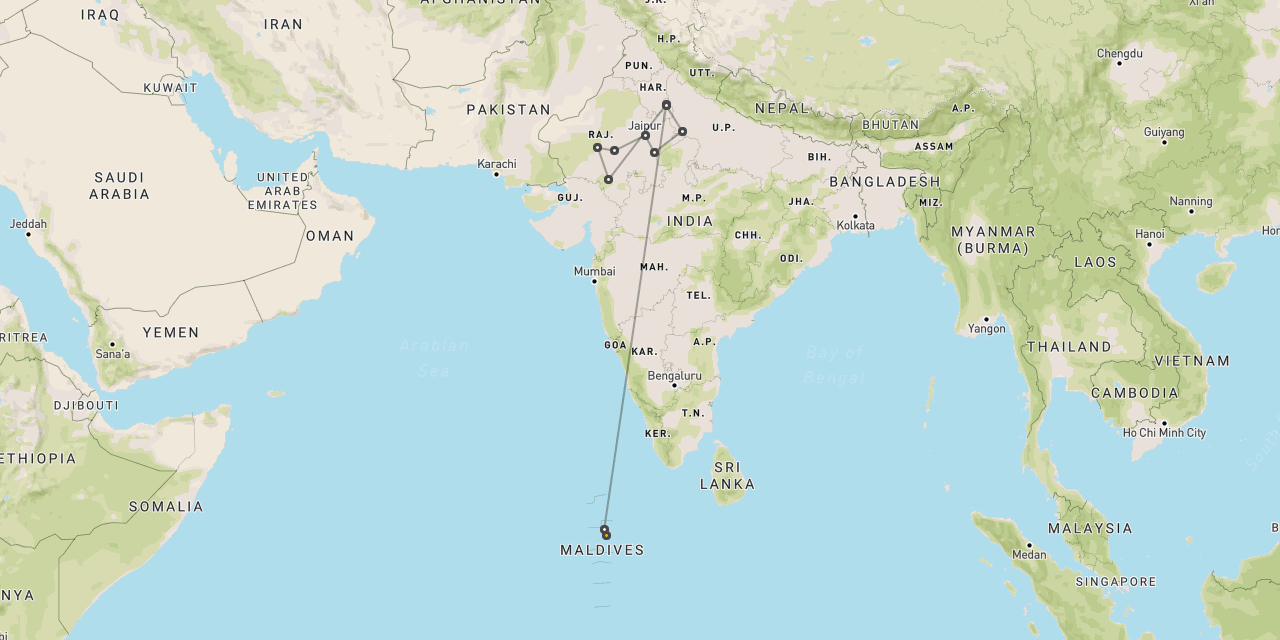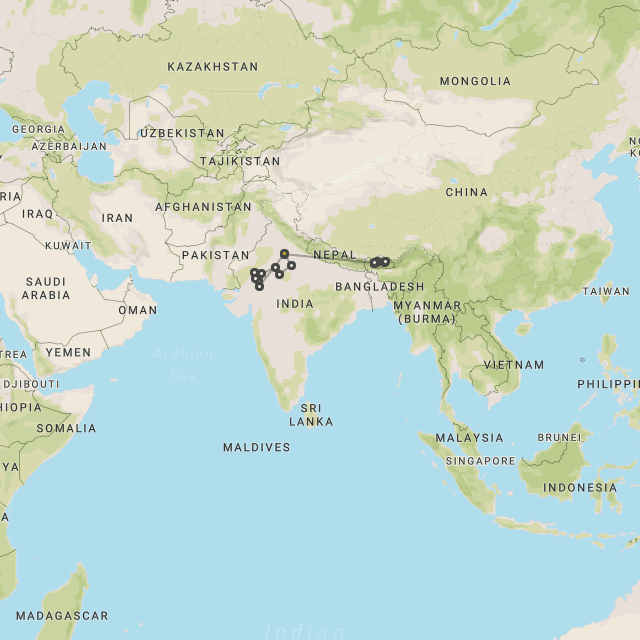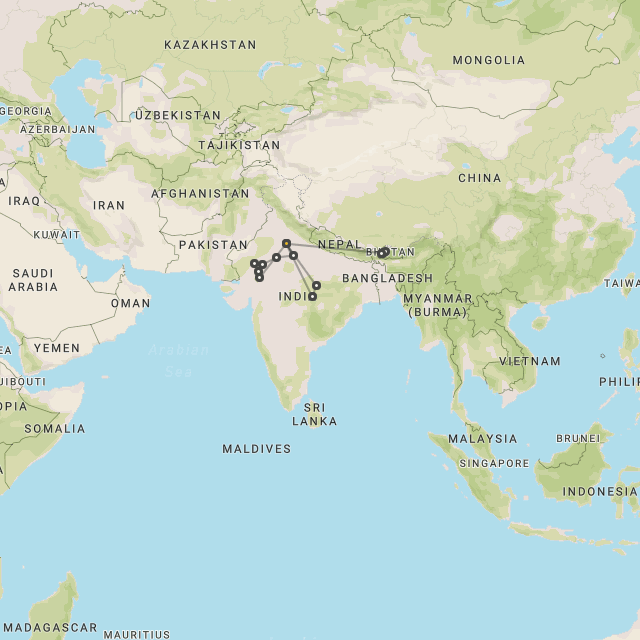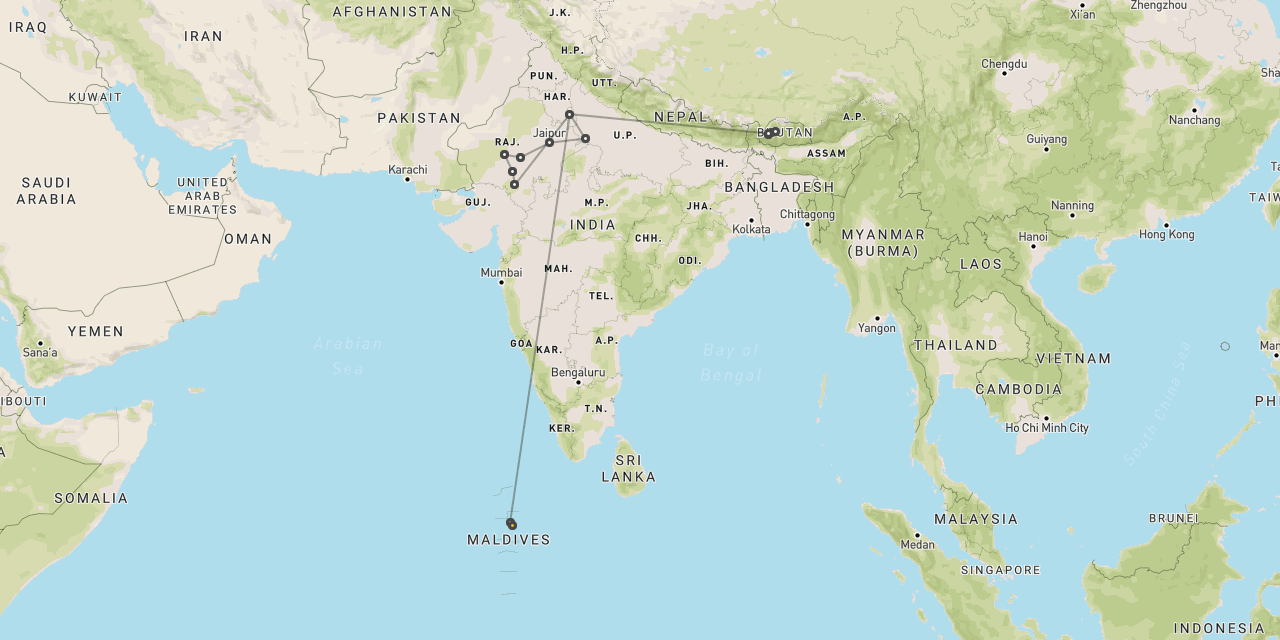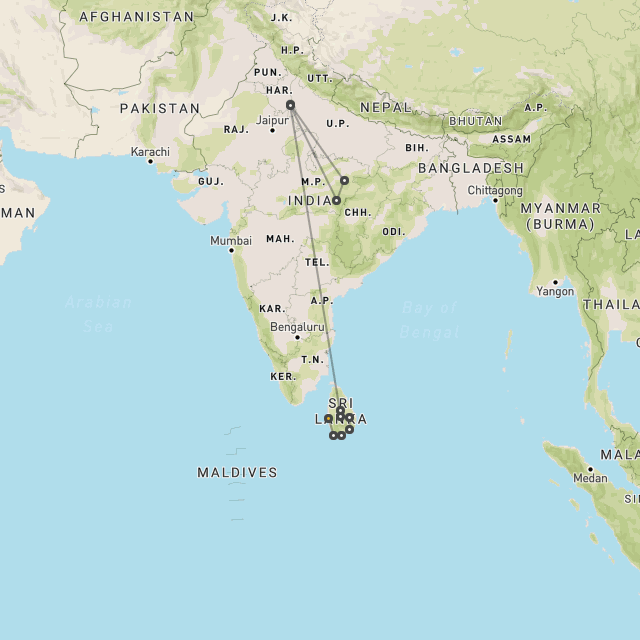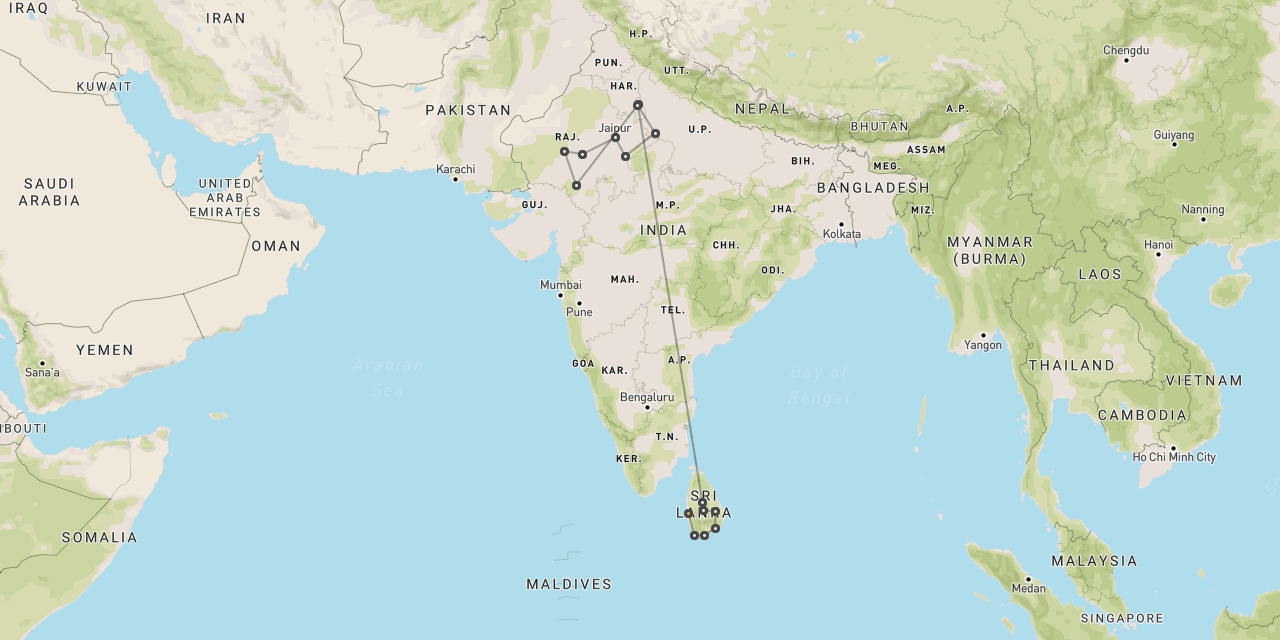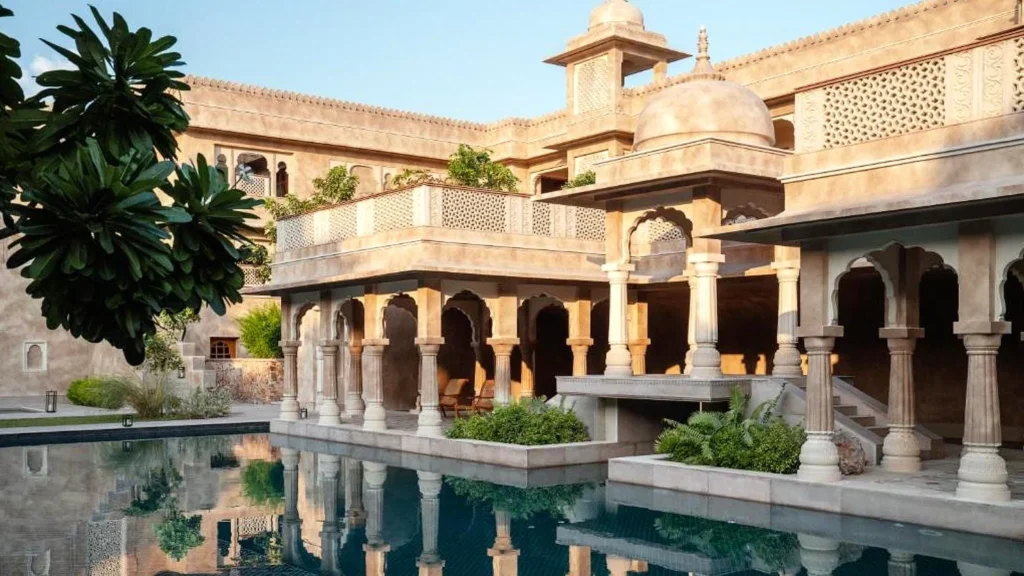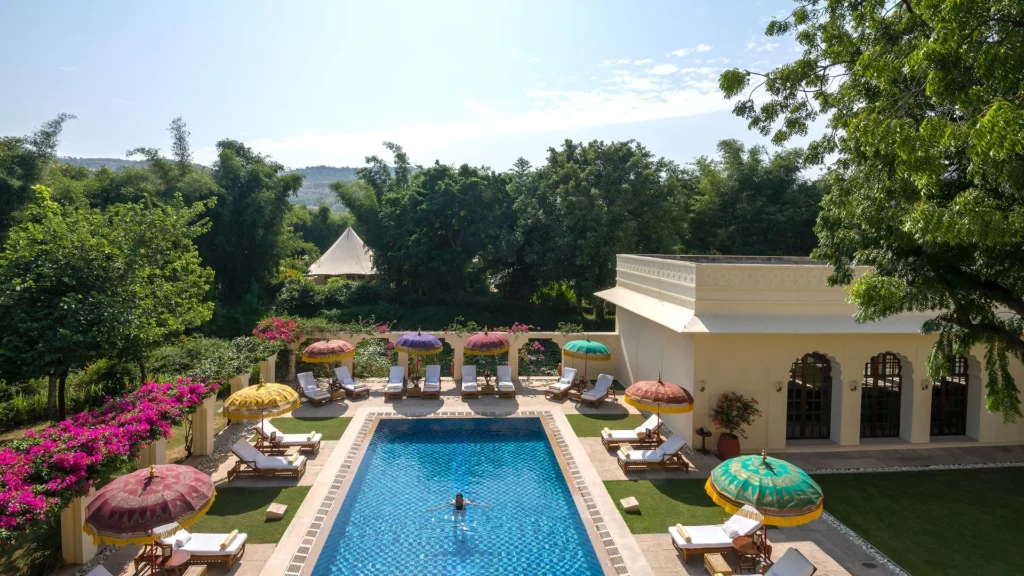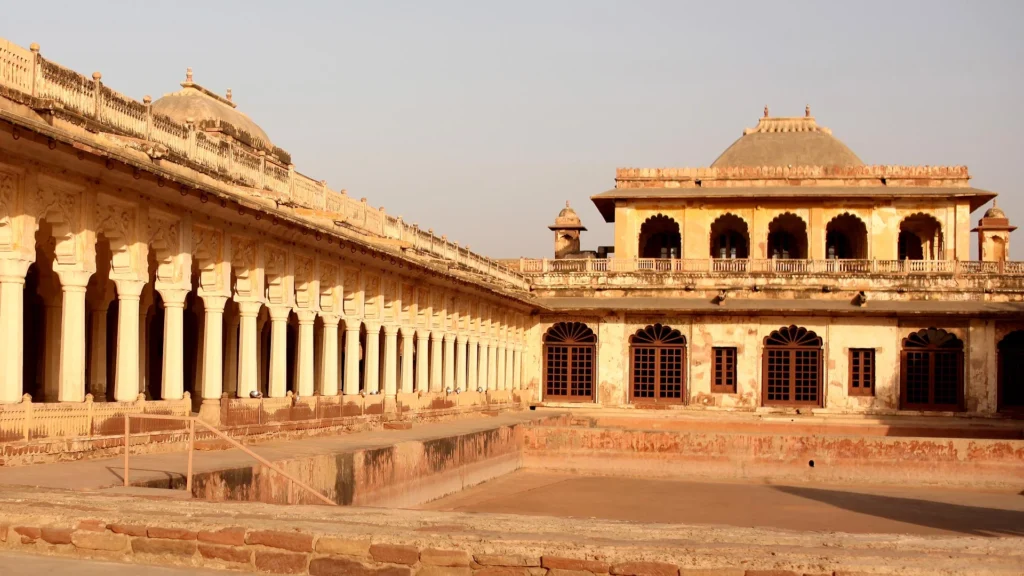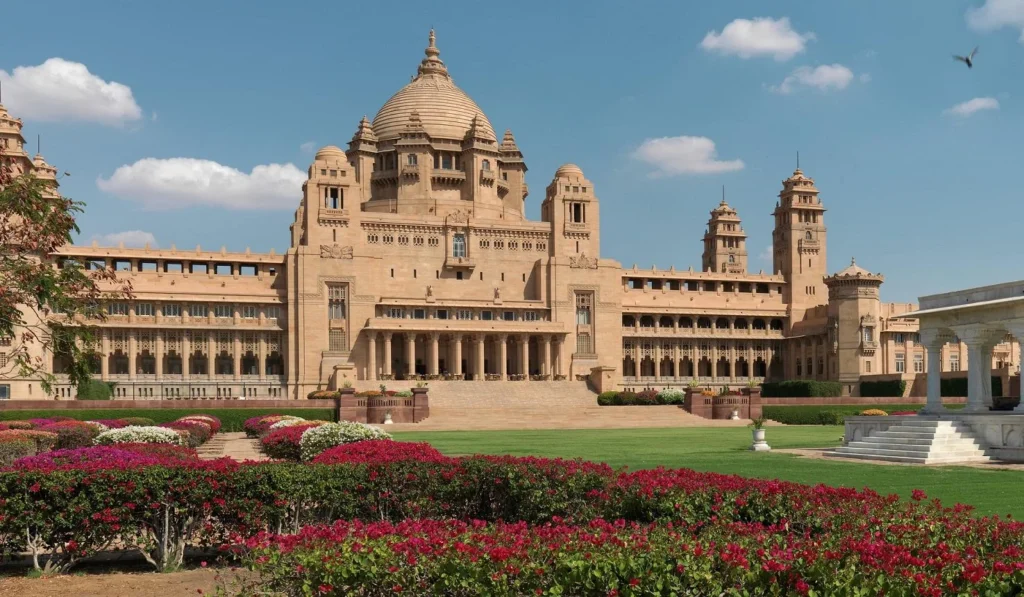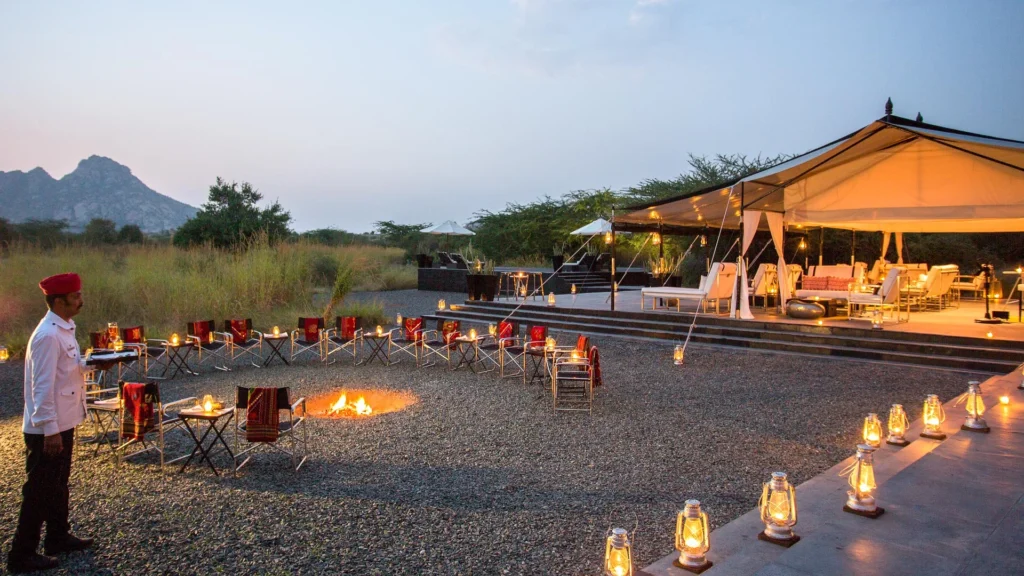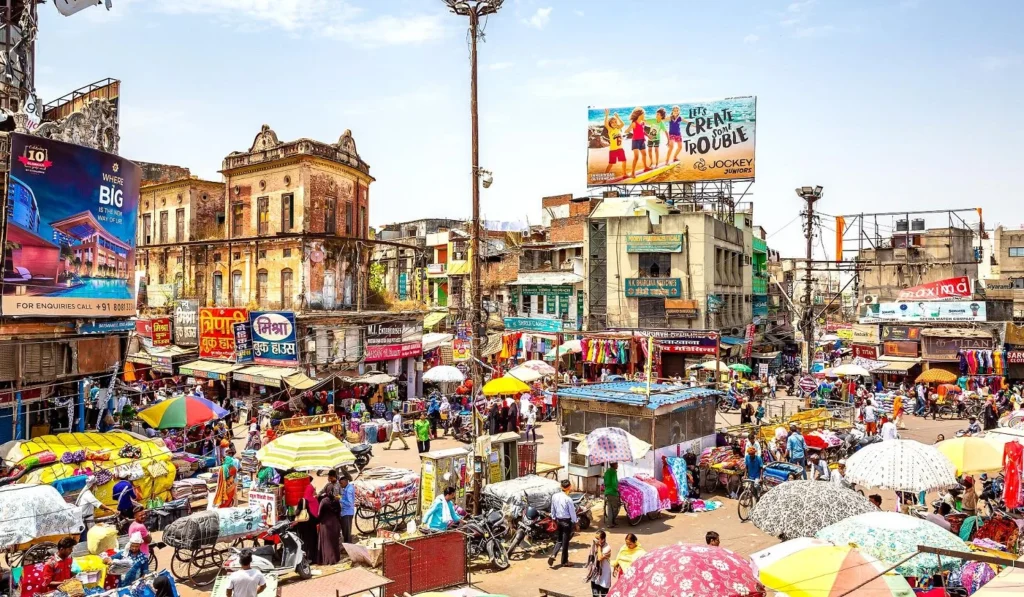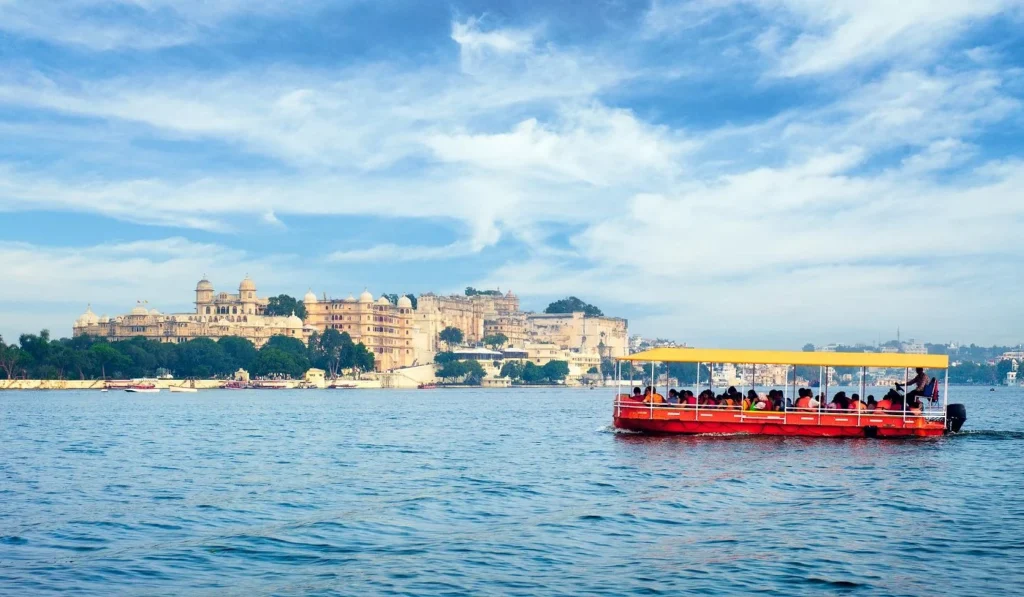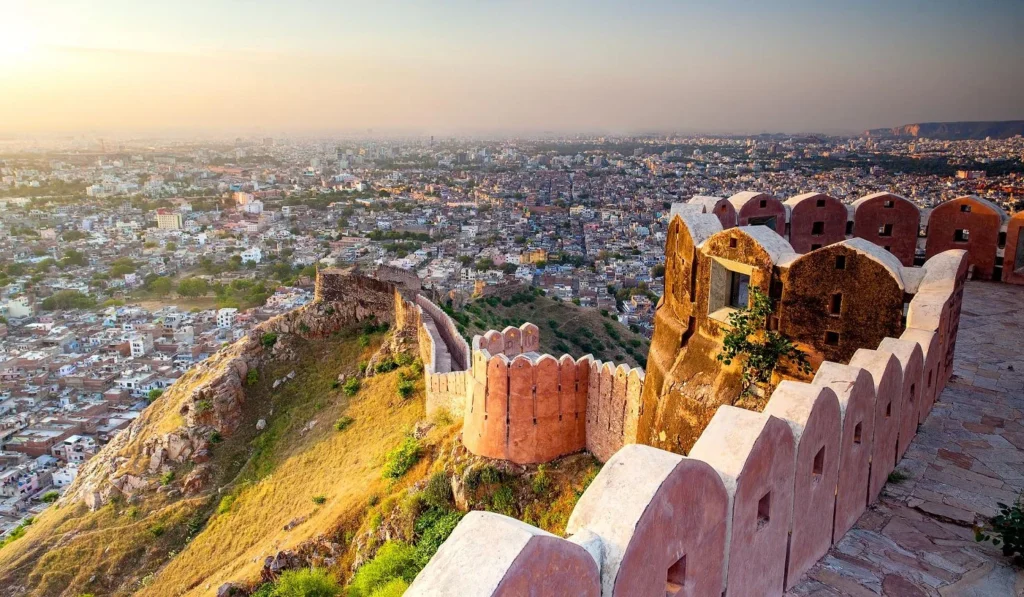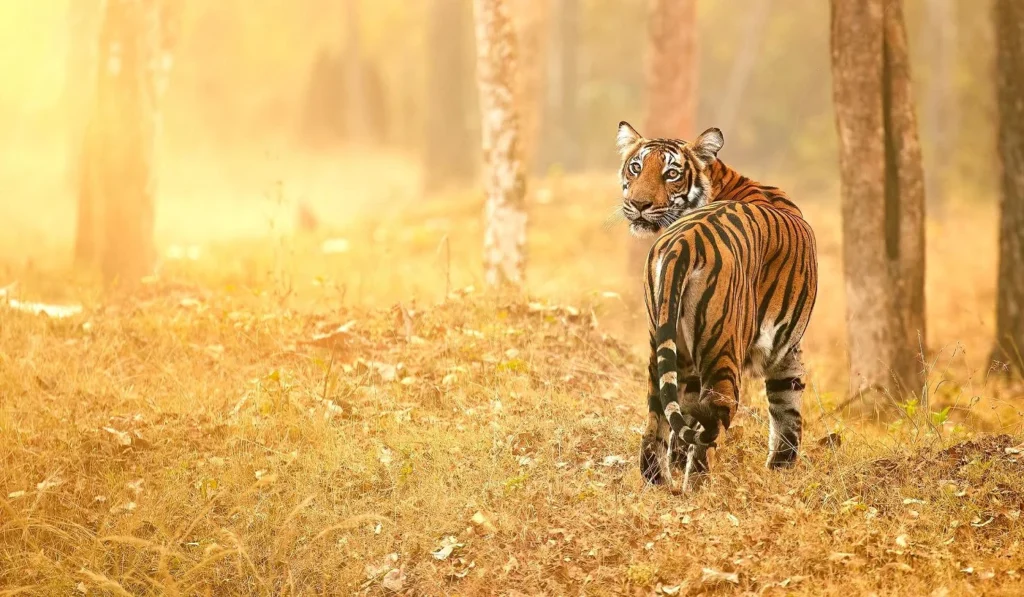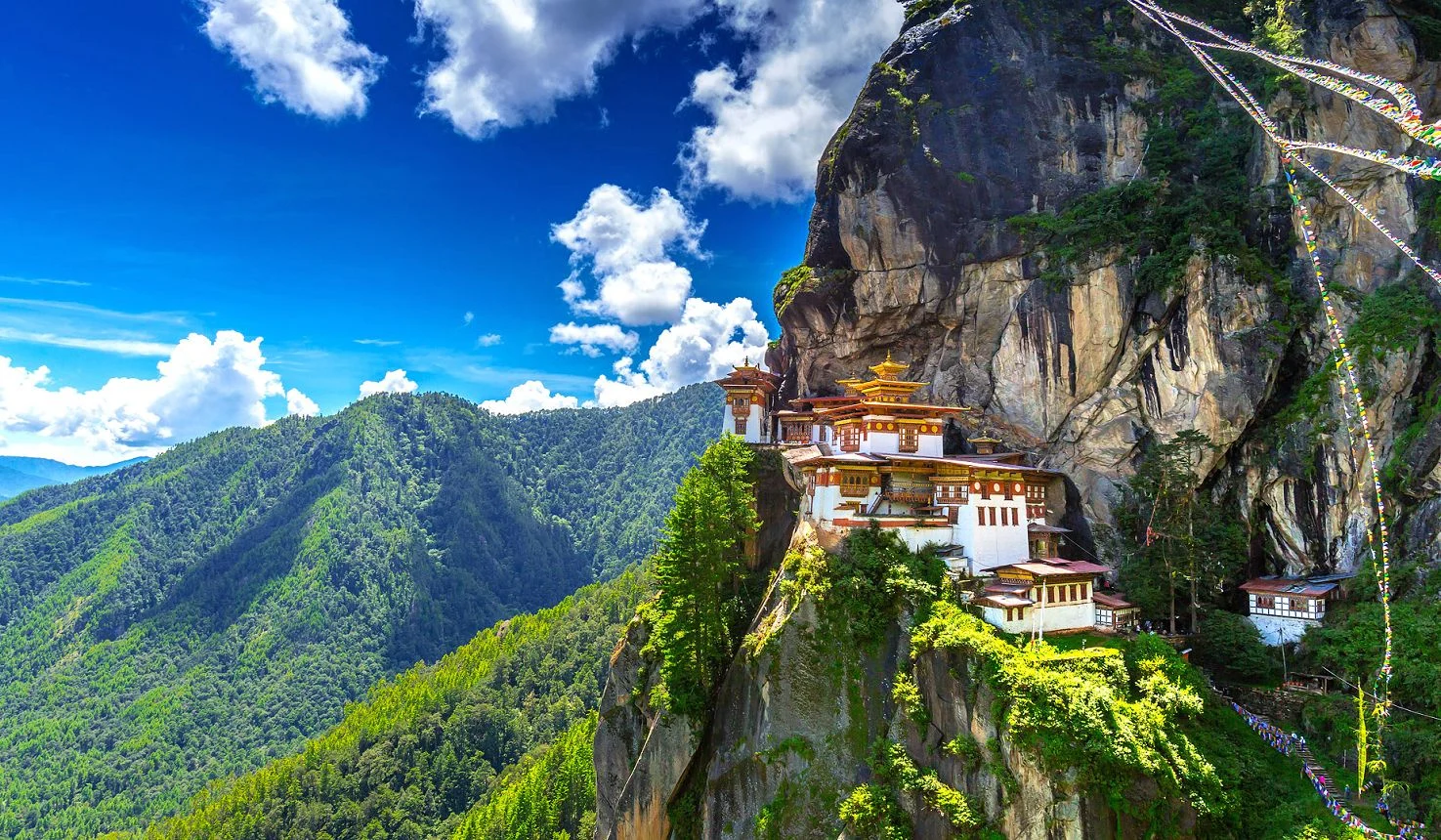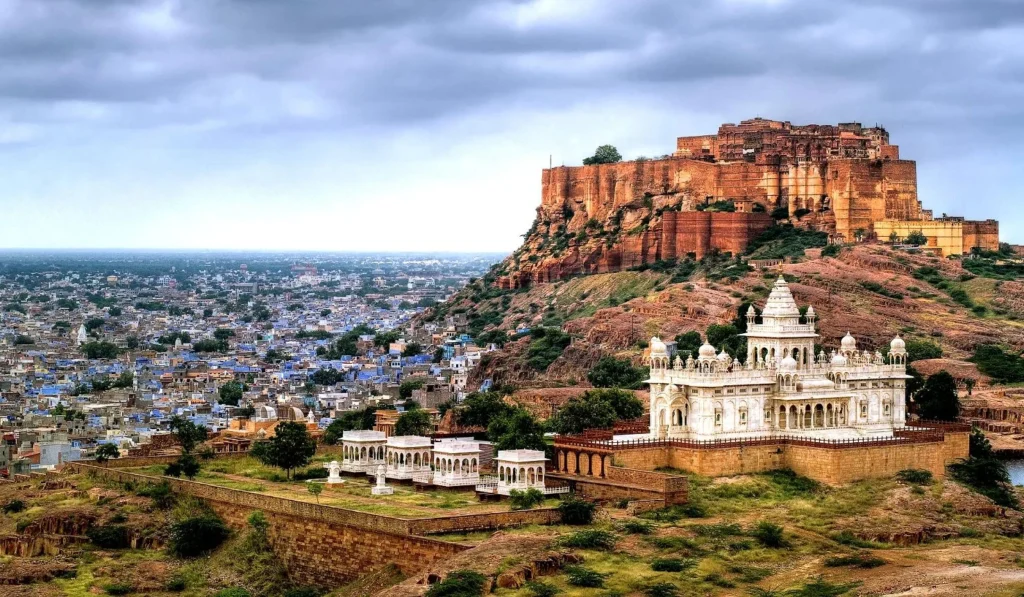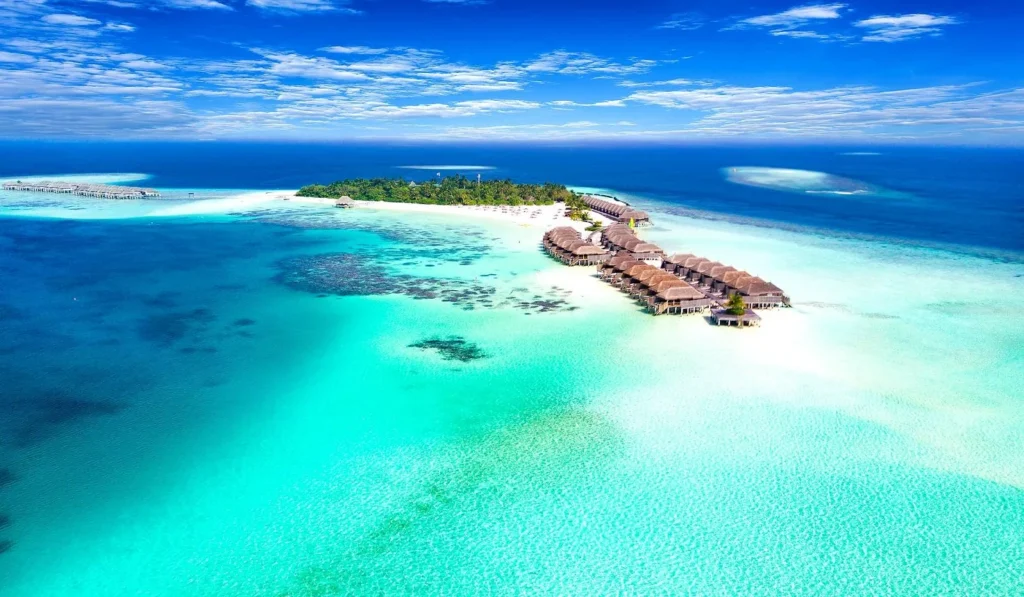
Khem Villas
Khem Villas
is a well-priced property
in the Ranthambore area

a pleasantly modest option
Set just outside the northeast border of Ranthambore National Park in Rajasthan, around 2.5km from the entrance gate, Khem Villas is a truly authentic and reasonably high-quality property.
The lodge is located on a large plot of land which the owners rewildified some twenty five years before they ever thought to develop a commercial property here. This lovely area of mature woodlands, lakes and grasslands was simply intended as a private oasis for the family, with wildlife including foxes, crocodiles, deers, jungle cats and jackals, as well as a host of bird species.
The lodge itself is centred on a communal campfire area, with a main building containing the lounge and dining spaces, as well as a handful of guest rooms, leading out to a small swimming pool.
The adjacent Age Veda Spa provides a peaceful space for treatments and yoga classes.
Rooms
Guest accommodation at Khem Villas is in around twenty rooms, each of which is equipped with air-conditioning.
The rooms come in four categories …
- Luxury Suites : x2 : the best rooms, with escarpment view
- Luxury Cottages : x8 : 148 sqm : private verandah
- Luxury Tents : x13 : with private bathroom
- Standard Rooms : x4 : in the main building, with private bathroom
Activities
Khem Villas offers a range of guided activities …
- vehicle safari
- motorboat safari
- camel sundowners
- spa
- historic tours
- village tours
- barber experience
- henna tattoos
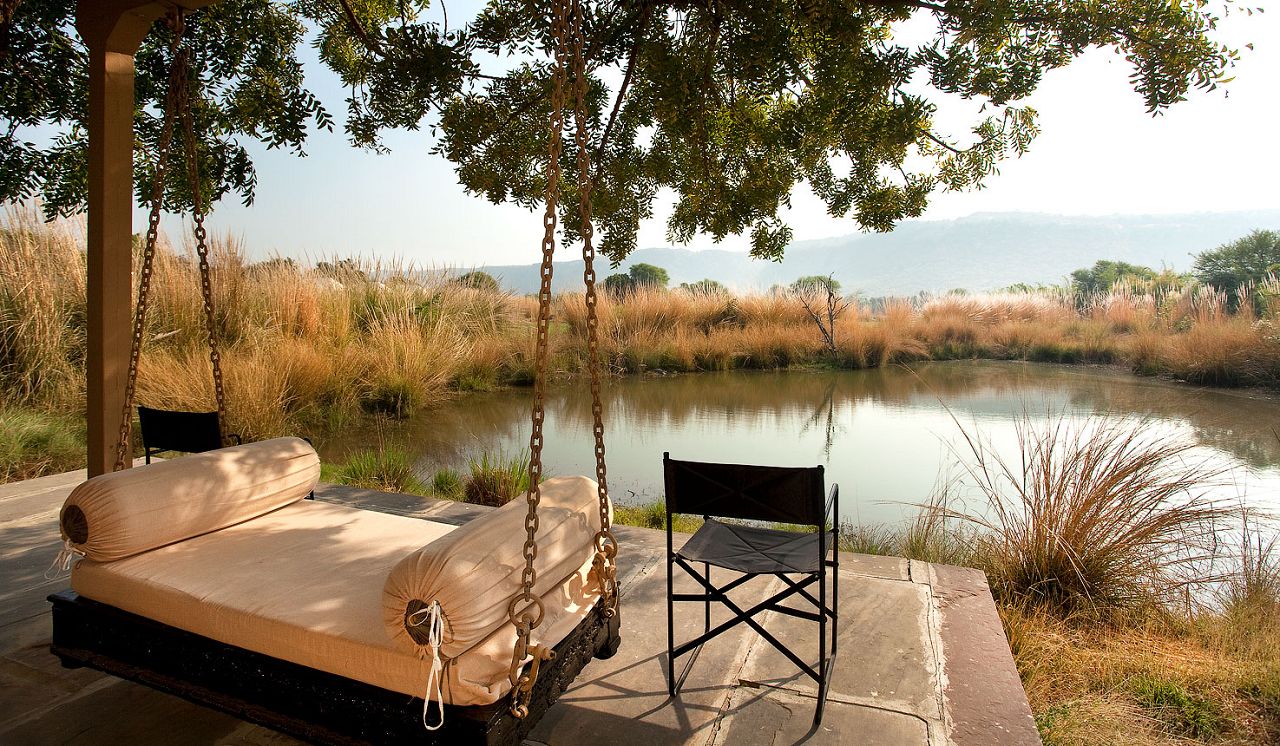
Gallery
Map
The Rajasthan region is usually explored as a private-guided overland safari, starting and ending in Delhi.
We often start these trips by flying from Delhi to either Udaipur or Jodhpur in the south, which are more rural and relaxed, before weaving a route north by road back to Delhi.
Ranthambore is the only significant tiger reserve in Rajasthan and is therefore an important stop for people who are not sufficiently focused on safari to head to the better reserves in Madhya Pradesh.
It usually features in trips between Udaipur/Jodhpur and Jaipur/Agra.
The usual stay duration is three nights, which leaves two full days for safari and other local activities.
Seasonality
The best time of year to visit the Ranthambore area is generally considered to be during Oct-May, although there are considerable climatic and wildlife viewing variations over that period.
October is the transition period between the end of the monsoon rains and the start of the cool dry season. During the month daytime temperatures usually rise to around 34C/93F, whilst the nighttime low temperatures hold up around 20C/68F. However the rainfall is much lower, dropping to around 25mm (1”) per month. Sunshine is around 8 hours per day (around 75% of daylight hours), meaning that skies are usually clear.
Nov-Feb is the main cool dry season. During this period the daytime temperatures usually rise to around 25C/77F, whilst the nighttime low temperatures plunge to around 9C/48F. There should be very little rainfall. Sunshine is around 8 hours per day (around 80% of daylight hours), meaning that skies are usually clear. As this season progresses and the foliage starts to die back, the visibility for viewing tigers and other animals should improve, meaning that February is perhaps the best month of the year.
Mar-May is the hot season, the often uncomfortable build-up to the main monsoon. During this period the daytime temperatures can climb steeply to around 37C/99F, whilst the nighttime low temperatures are up around 23C/73F. Rainfall usually increases slightly, from almost nothing in March to around 25mm (1”) in May. Sunshine is around 8 hours per day (around 75% of daylight hours), indicating that showers tend to be occasional, set against a usually clear sky. The foliage should have largely died off by this time, making wildlife viewing easier. Also the tigers and other animals tend to cluster around the few remaining water sources. All of that adds up to strong wildlife viewing, especially during the middle of the day, if you can take the heat.
June is the transition month ahead of the main monsoon rains, often with rather uncomfortable conditions. During the month daytime temperatures can climb very steeply to around 40C/104F, whilst the nighttime low temperatures remain up at a stifling 28C/82F. Rainfall climbs to around 50mm (2”) over the course of the month. Sunshine is around 7 hours per day (around 45% of daylight hours), meaning that skies are often overcast as the monsoon clouds gather.
Jul-Sep is the main monsoon season and is generally considered to be the least favourable time to visit. During this period the daytime temperatures drop off slightly to around 34C/93F, whilst the nighttime low temperatures remain up at a stifling 24C/75F. Rainfall climbs to around 175mm (7”) per month. Sunshine drops to around 5 hours per day (around 35% of daylight hours), meaning that skies are very often heavily overcast.
Getting there
The Ranthambore area is usually reached by road, connecting into trips as follows …
- Delhi : 300 km to the north
- Agra : 200 km to the northeast
- Jaipur : 100 km to the northwest
- Jodhpur : 300 km to the west
- Udaipur : 300 km to the southwest
usually for three nights in an exploration of Rajasthan
let us know your thoughts about India
and we will help you create the perfect safari

Extraordinary tailor-made adventures,
from earthy and edgy to easy and extravagant
From around USD 2500 per person, you set the ceiling
Sample Trips
Here are some of our popular trip shapes
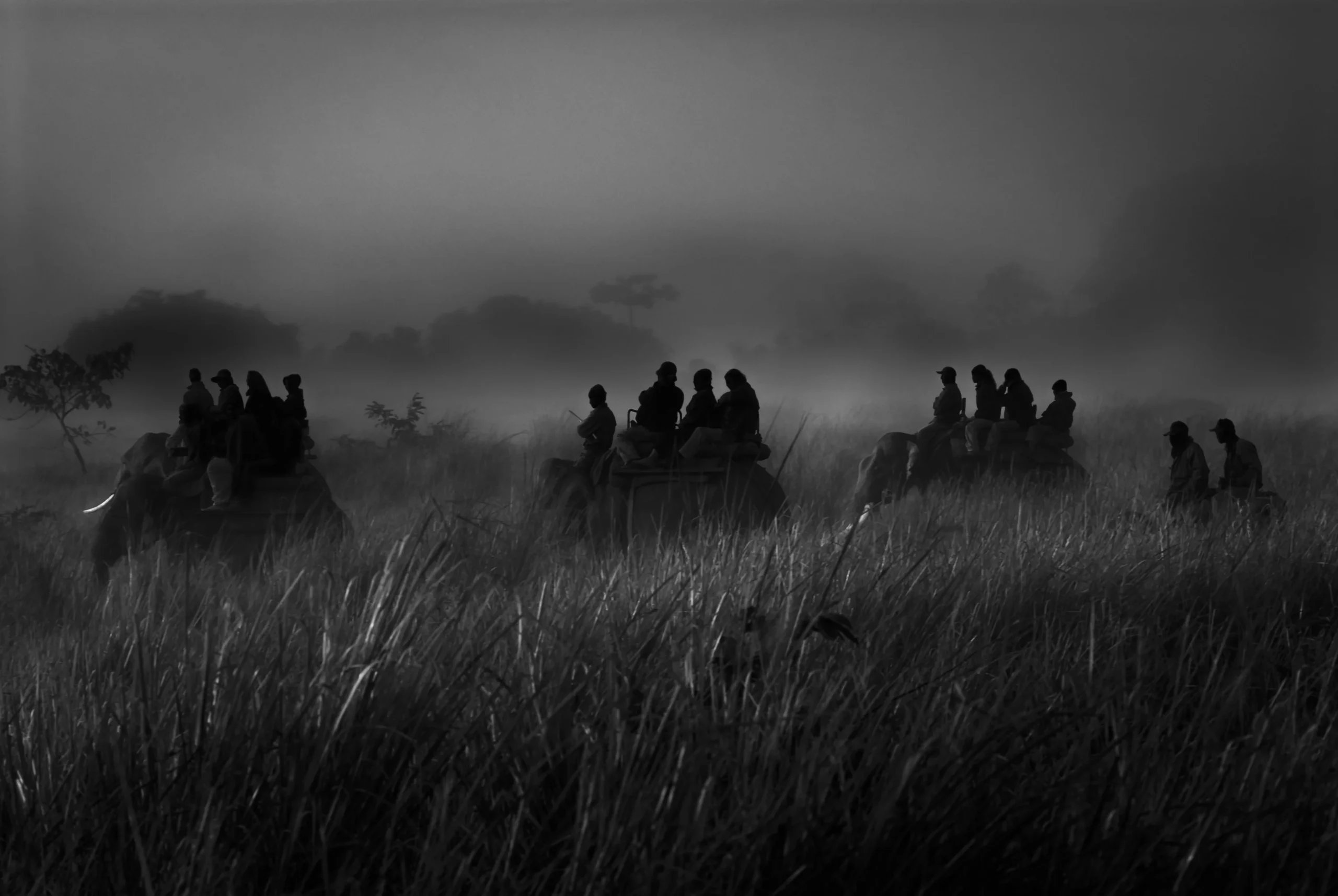
Get started on your trip
It’s never too soon to get in touch, we are here to help with every stage of your planning.
Best Lodges
We regularly inspect and photograph all of the the best lodges, to ensure that we always recommend the most suitable options
Key Locations
Take a look around related locations. Click ‘View more’ to explore locations further afield.




































